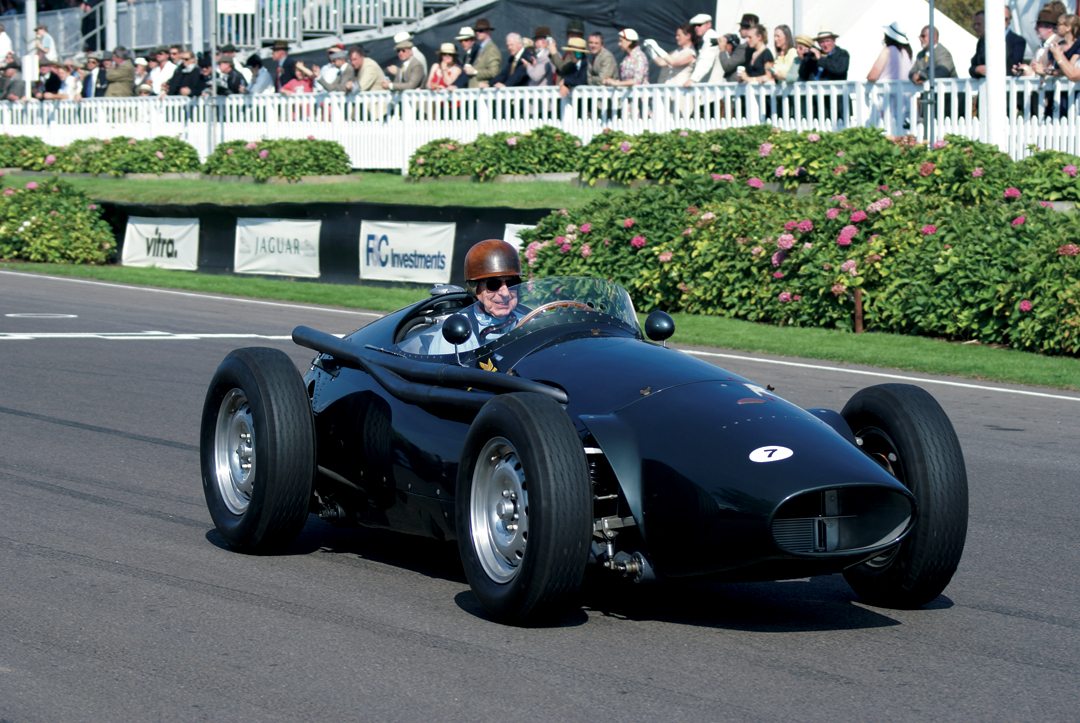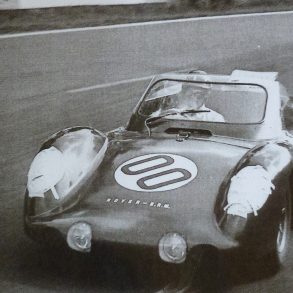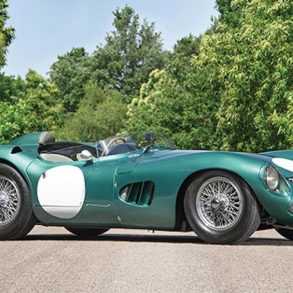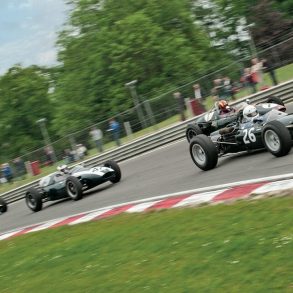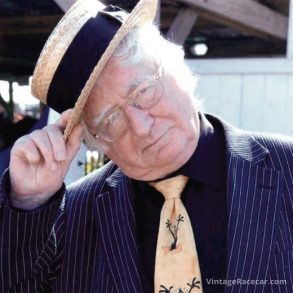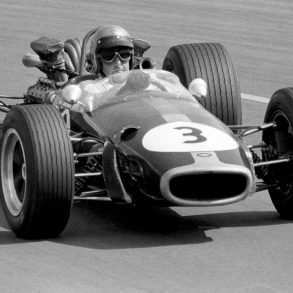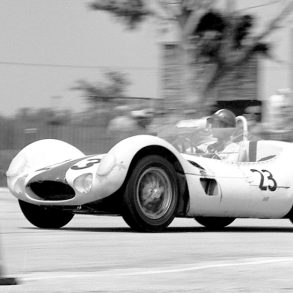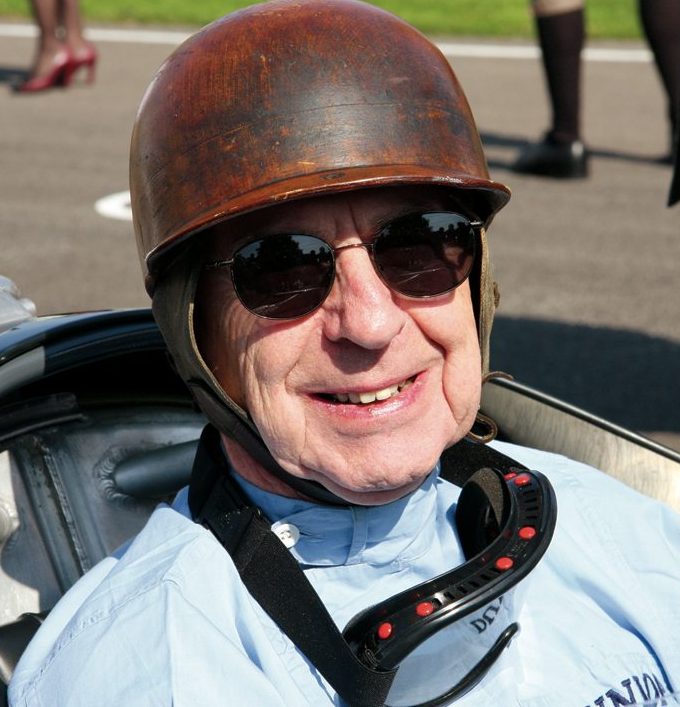
Photo: Keith Booker
Quiet, thoughtful, modest, Tony Brooks was all of those things, which is probably why his name isn’t exactly on the tip of everyone’s tongue when reminiscing about post-war motor racing heroes. But this unpretentious young man was the strong, determined driver who lit up fast circuits like Spa and Monza in works Vanwalls and Ferraris, and twice came close to winning the world title.
Born in Dunkinfield, Cheshire, Charles Anthony Stanford Brooks, alias Tony, was a 20-year-old dental student at Manchester University when he started club motor racing in his spare time—first in a Healey and later a Frazer-Nash—but he graduated to the works Aston Martin team in 1955 and surprised the pundits when he and Peter Collins came 3rd in the Goodwood 9 Hours driving a DB3S. After some single-seater placings, Brooks was invited to drive a Connaught in the Syracuse Grand Prix in Sicily. That was a bit of a shock but, rather absentmindedly, he accepted, swatting for his dentistry finals on the journey to the Mediterranean island. The opposition wasn’t quite what Connaught expected, because the Ferraris didn’t compete. There was stiff opposition from Gigi Villoresi, Luigi Musso and Harry Schell in Maserati 250Fs, which their drivers said handled like a dream but were underpowered. Although Tony had never even sat in a Formula One car before that day, he ended up lapping the Sicilian circuit in the Alta-engined Connaught B in competitive times. So competitive that he won the non-championship F1 race by two minutes from Musso, and even set the fastest lap of 104.23 mph. Not bad for a 23-year-old dental student and ex-clubbie.
His 1956 season with a couple of outings in a BRM was a bit of a damp squib, so in 1957 Brooks joined Vanwall where he was about to do great things. He was number two to Stirling Moss, with Stuart Lewis-Evans in the number three spot. Brooks did well from the outset by qualifying 4th in May for the Monaco Grand Prix and coming 2nd to winner Juan Manuel Fangio in the race. But in June he crashed his works Aston Martin DBR1/300 on lap 141 of the 24 Hours of Le Mans and, although he broke no bones, he was just out of hospital and still feeling pretty sore by the time the British Grand Prix at Aintree came around in July. It was an uncomfortable ride, and Tony had dropped down to 9th place when he was called in on lap 28 so that Moss, whose Vanwall VW4 was giving trouble, could take over Tony’s VW4 and win the race, so joint victory went to Moss and Brooks, Tony’s first Grand Prix win.
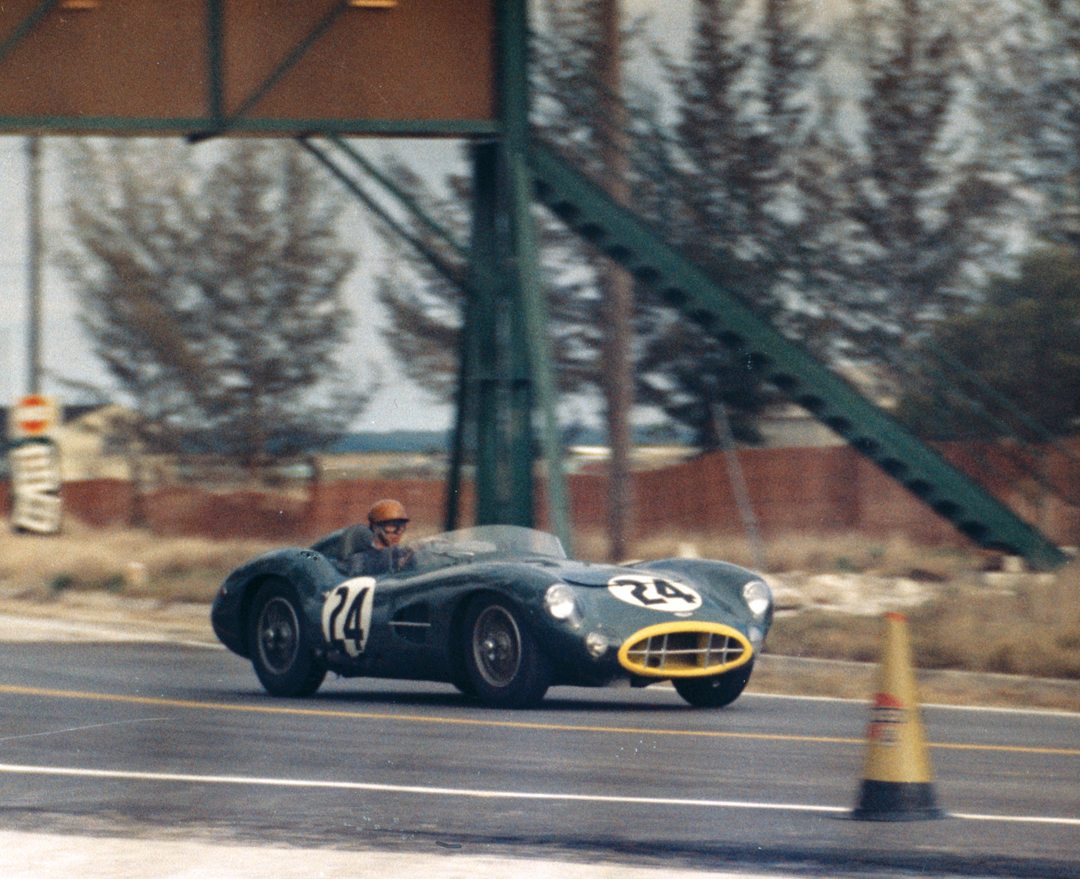
Photo: Ed McDonough Collection
The Vanwalls weren’t really competitive for the rest of 1957, but 1958 was a knives-drawn battle between the much improved Britishers and the Ferraris, with the green team late consolidating its performance capability. It wasn’t until May and the third race of the season in Holland that Stirling won in a VW10. Then came Spa-Francorchamps, which pleased Tony no end as he loved the circuit and had won there in Astons twice to prove it.
The circuit had been somewhat sorted, with a few corners smoothed out and a total distance of 14.10-km instead of the previous 14.12. Race day was warm and sunny. Moss shot away in the lead with Brooks close at hand in 2nd, but going into Stavelot Stirling uncharacteristically missed a gear and sent the engine revs through the roof, which put him out. So Tony inherited the lead and then set about earning it. He was hounded for much of the race by Mike Hawthorn in the Ferrari Dino 246, but by lap 14 Tony had pulled out 40 seconds on Mike, who later closed up again. Brooks experienced the stuff of heart attacks going into La Source on the last lap, where his gearbox seized and he was just about able to crawl to the checkered flag to win, with Hawthorn crossing the line in 2nd, 20 seconds later.
Mike Hawthorn and Peter Collins of Ferrari won the French and British Grands Prix, respectively, but come the German GP Vanwall was running extremely low on engines, so that they only entered Moss and Brooks, leaving Lewis-Evans to spectate. Both the British cars were on the front line of the Nürburgring grid for the start, in between Hawthorn on pole and 4th-fastest Collins. Stirling got away first with Tony following him, but as Moss widened the gap magneto trouble started to plague his car and eventually put him out on lap four. The two Ferraris passed Brooks and soon had pulled out 30 seconds on him.
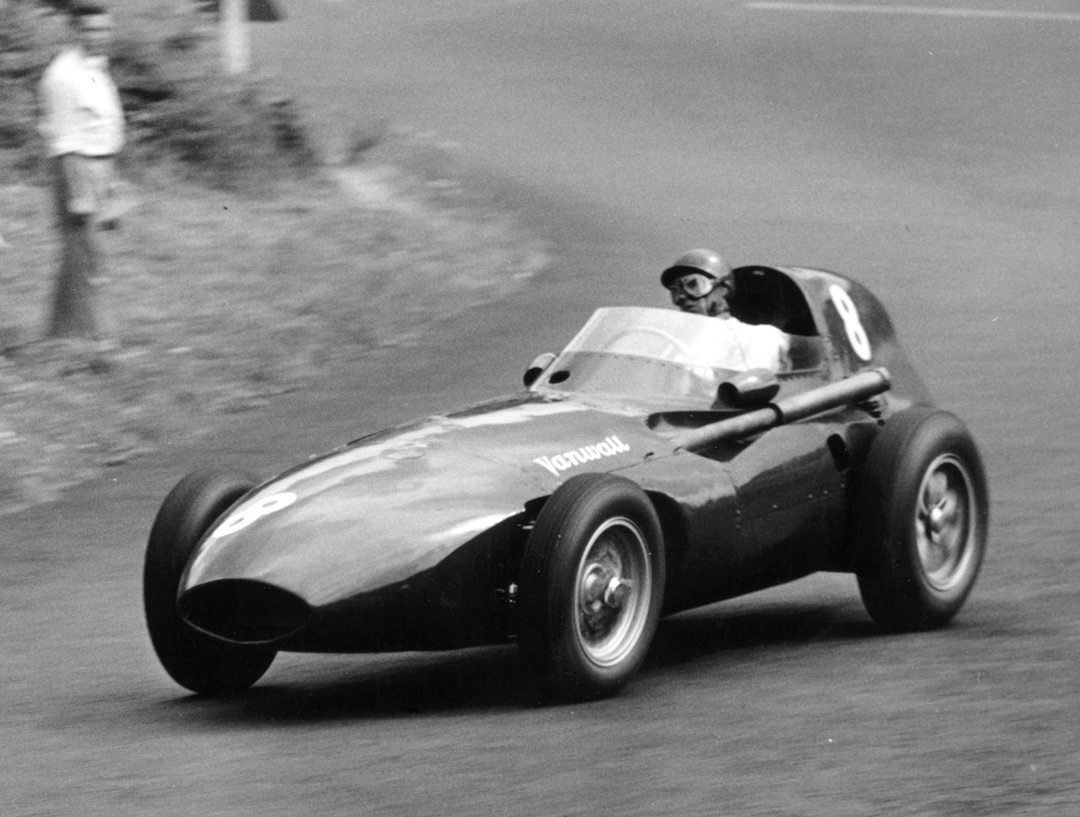
Come lap nine, Brooks had overtaken Hawthorn, but on lap 11 the two ended up side by side as they went into the South Curve until Brooks pulled ahead again and then took Collins, but the young Briton crashed at Pflanzgarten, being thrown out of his Ferrari and into a clump of trees. He died in hospital soon afterward.
Hawthorn retired with mechanical problems while Brooks was still in the lead and Tony ended up winning the race by three minutes from Roy Salvadori’s Cooper.
Brooks then won the Italian Grand Prix even though he had to make an unscheduled pit stop to stem an oil leak; and that made it three GP victories to Stirling’s four. Hawthorn had only one, but still became the 1958 Formula One World Champion by amassing just enough points, with 42 to Stirling’s 41 and Tony’s 24. To placate fevered brows somewhat, however, Vanwall did take home the inaugural constructors’ world title.
In 1959, Tony was invited to join Scuderia Ferrari and got down to work straight away by coming 2nd to Jack Brabham at Monaco in a Dino 246, and it didn’t take him long to snatch his first Ferrari victory two months later at Reims. As they were flagged away, Tony in the works Dino out-accelerated Brabham’s Cooper T51-Climax to take the lead, which he never lost.
He won the German GP on the Avus banked circuit near Berlin that year, leading Dan Gurney and Phil Hill in a Ferrari 1-2-3 across the line to finish even closer to the top of the table in 2nd place with 27 points to new World Champion Brabham’s 31. That would, however, be his last F1 victory.
Tony had more or less had his fill of F1 by the end of 1959 and was looking beyond the sport for other rewarding things to do in his life. He bought a garage at Weybridge, Surrey, left Ferrari and joined Yeoman Credit Cooper in 1960 to drive their hardly competitive T51-Climax. Not that it did him much good, except for 4th at Monaco and 5th in the Grand Prix of Portugal. The following year, he moved to BRM, but their P48/57-Climax wasn’t up to much either, so he retired at the end of that season to pursue his business interests.
Although he qualified in dentistry, he decided not to practice that profession, but instead invested his time in building up his Weybridge garage Lancia dealership, which is within sight of the old Brooklands racing circuit. Tony is now also retired from the business and takes part in a variety of media events, especially the Goodwood Festival of Speed.


